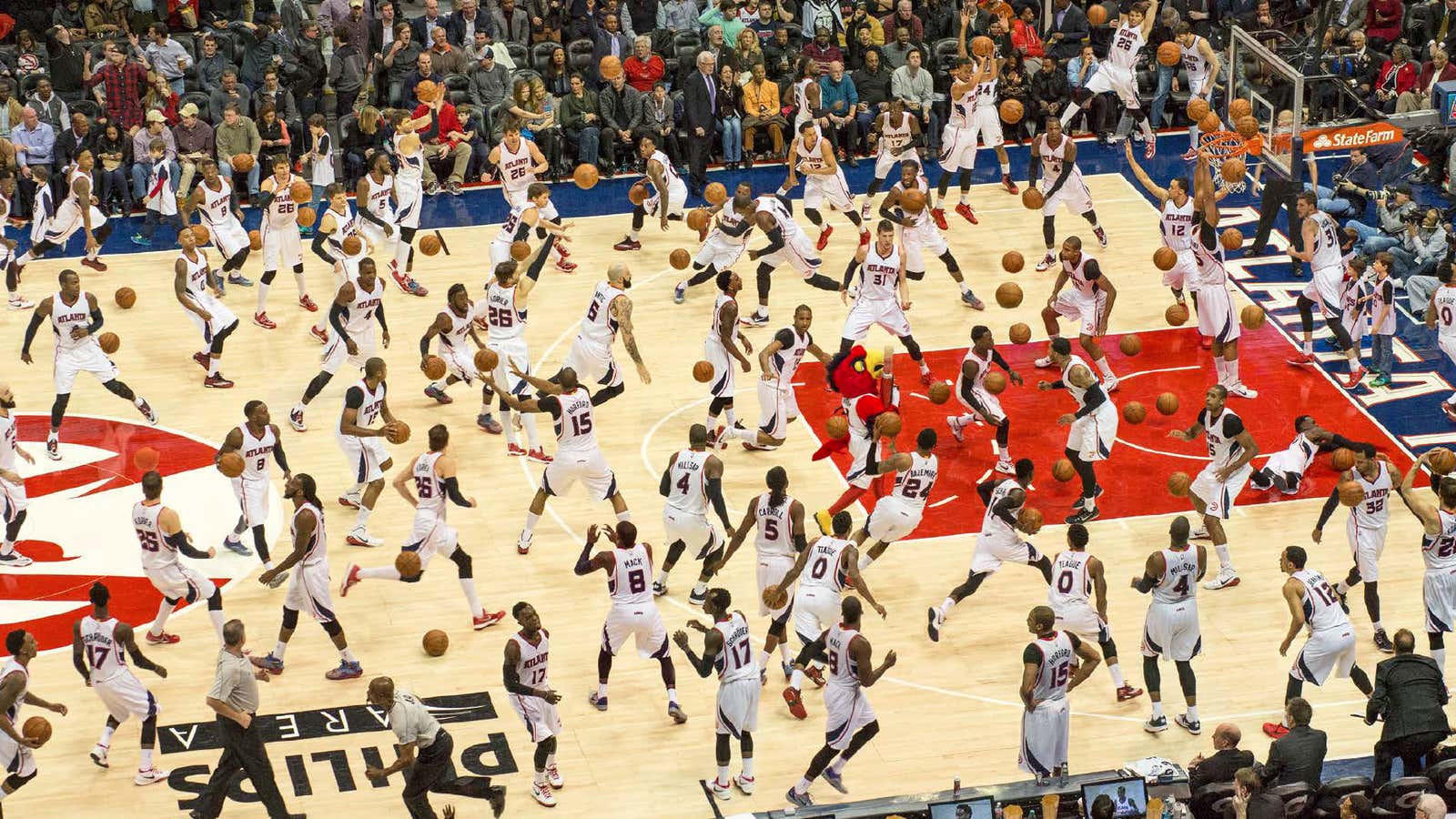The next frontier in infographics is already on your mobile phone.
In 2015, people around the world took a staggering 1 trillion photographs, according to research firm InfoTrends. By 2017, 4.9 trillion images will be stored online. But what good is this deluge of selfies, dog pictures, travel snapshots, and obsessive food photos? New York-based information designer Nicholas Felton thinks they could be the basis of a striking new kind of data visualization he calls “photoviz.”
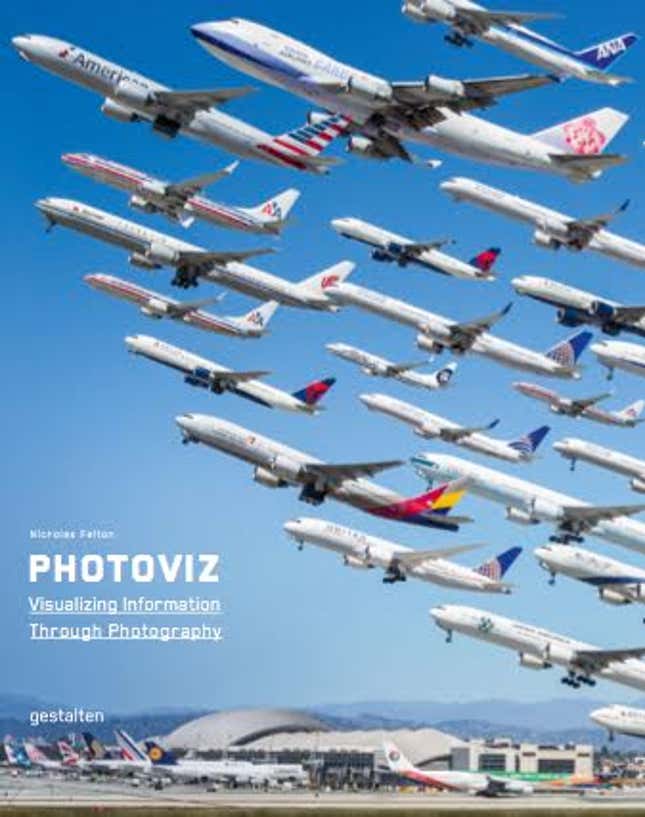
“We are awash in images and surrounded by cameras. As with data, the quantity of imagery produced today exceeds our capacity to understand it,” writes Felton in the introduction to a new book he co-edited, titled PhotoViz: Visualizing Information Through Photography.
Best known for producing beautifully-printed annual reports about his personal activities and for designing Facebook’s Timeline feature, Felton believes that photographs can help make sense of the world, with a different kind of precision from illustrated charts, diagrams and infographics.
“What I love about these projects is that they don’t require their subject to be rigidly quantified,” Felton says to Quartz. “A subject like the stock market is inherently numerical, and representing it graphically is natural. For the rest of the world, a photographic approach can make more sense and precision takes different forms. A chart is accurate to its subject by preserving the numbers it represents. On the other hand, a photoviz of a person aging, or an athlete in motion retains a precision to its subject that would be lost in a conversion to data.”
The cover of the book, scheduled to be released by publisher Gestalten in the US in April, makes his point: A surreal “photo” shows a fleet of planes taking off simultaneously, created by stitching together 400 separate images that photographer Mike Kelly shot and composed over the course of 16 hours at the Los Angeles International Airport. Kelly’s photorealistic image, inspired by a 2005 concept by Korean artist Ho-Yeol Ryue, dramatically illustrates activity in the fifth busiest airport in the world.
Here’s a sampling of further experiments with this perspective-shifting data visualization technique, from PhotoViz:
The passage of time
Claude Monet painted the Rouen Cathedral in France more than 30 times in two years, to produce his famous atmospheric series. In PhotoViz, artist Fong Qi Wei collaged together 36 pictures to capture sunset over the Seine river.
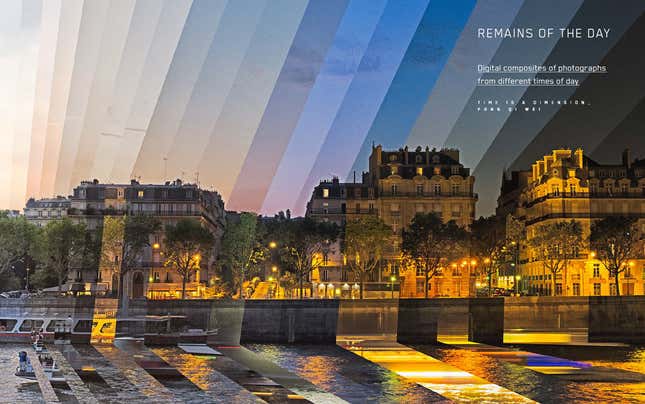
Using a slit-scan camera, Hungarian photographer Adam Magyar appears to freezes time with his elongated panorama-like tableau. The image documents activity in one sliver of the landscape over a period of time, with his camera fixed on one spot. The people on the far right of the frame passed his camera first, and the truck on the left rolled in last.
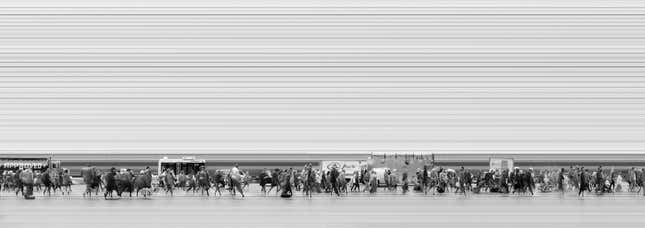
Below, Dutch web developer Babak Fakhamzadeh layered 19th century scenic postcards of Freetown, Sierra Leone over present-day snapshots to produce this efficient and revelatory image about the changes in the urban landscape over time.
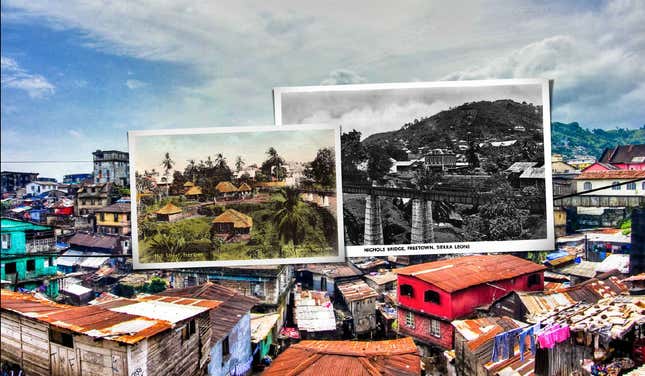
Getting old
Photographer Bobby Neel Adams reassembles photographs in a technique he calls “photo surgery” to vivify the aging process.
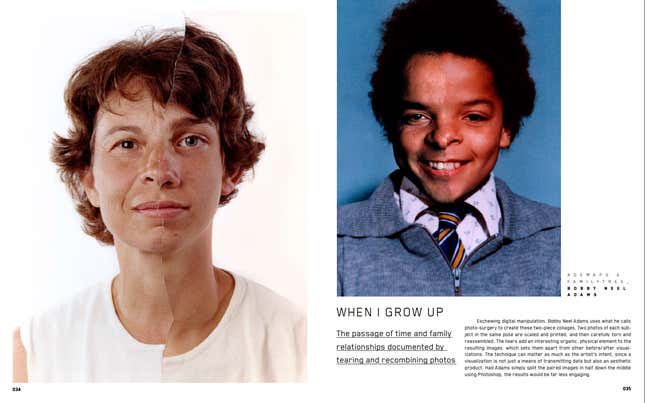
This meticulously composed self-portrait by Canadian interaction designer Dylan Mason was made by aggregating 365 selfies taken over the course of a year.
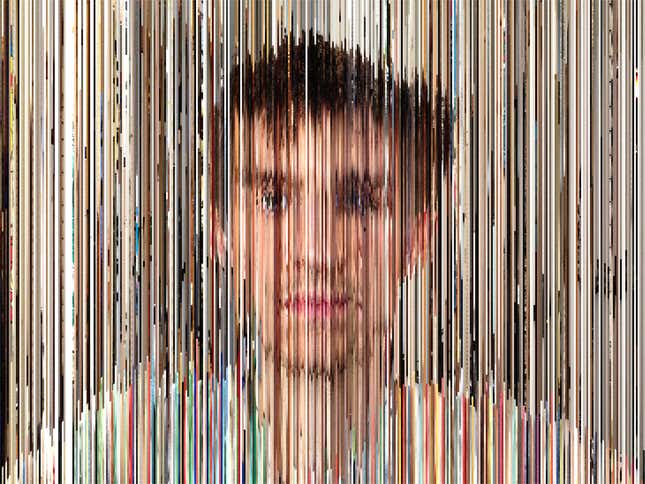
The things we touch
Reminiscent of the satisfying Tumblr blog Things Organized Neatly, ethnographer Paula Zuccotti creates evocative portraits by taking photographs of all the objects a person touched over the course of 24 hours, and arranging them in a neat grid.
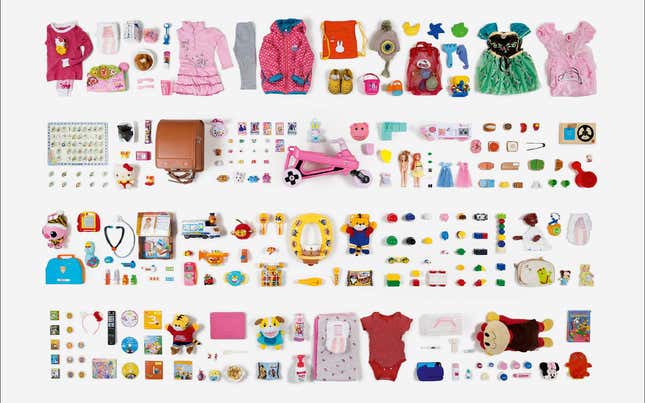
Picturing pollution
For a series called “Washed Up,” Mexican multi-media artist Alejandro Duran collects bits of plastic trash that washes up along the coastline of a protected reserve, and arranges them by color to draw attention to the worsening pollution of the world’s oceans.
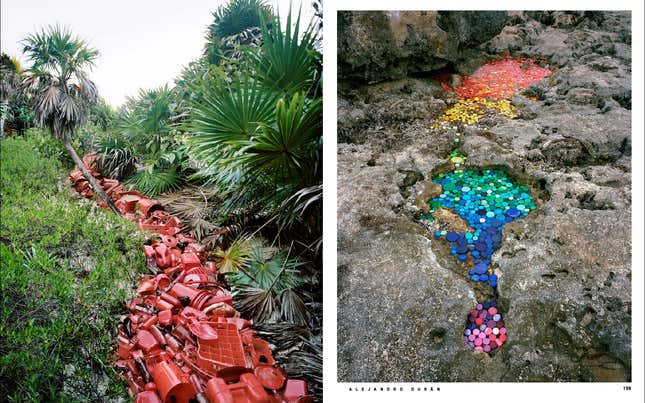
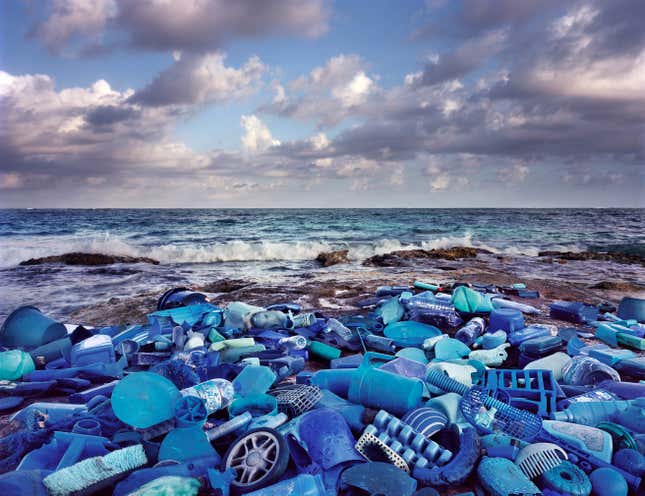
Constructed coincidences
“Nothing has been changed, only selected,” wrote Boston-based artist Pelle Cass about his startling compositions that depict fake coincidences. This park overrun by dogs was created with 300 exposures over an hour, and recomposed in 150 layers in Photoshop.

Reflecting on the growing number of photoviz-type images that he collects on his Tumblr, Felton thinks that our stance about hoarding photographs and terabytes of data will change over time. “I hope that this means we start to treat photographs as a more disposable medium. Historically, the cost and effort of producing a photograph imbued it with value that made it hard to dispose of,” Felton says on Gestalten’s website. “When photography is free and universal, it might be best to let our understanding of photography evolve as well, allowing photographs to be more transient.”
